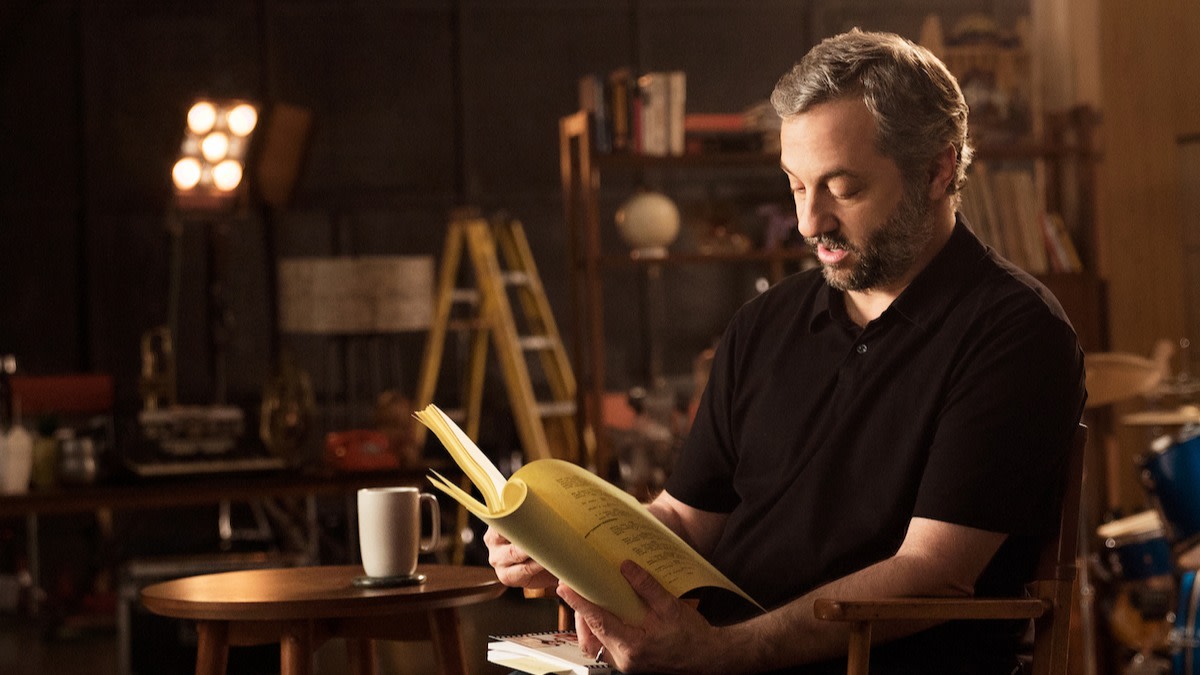Judd Apatow Shares 5 Story Structure Tips for Screenwriters
Written by MasterClass
Last updated: Oct 23, 2021 • 3 min read
Every Hollywood film is written using a simple screenplay structure. Even feature films that seem abstract have a very simple structure, and within that simple layout, there are still plenty of ways that you can tell a unique story with dynamic new characters.
Learn From the Best
A Brief Introduction to Judd Apatow
Judd Apatow is considered one of the most sought-after comedy minds in the business. He has been closely associated with many of the biggest comedy films and hit television shows over the last decade and a half. Apatow has written and directed such films as The 40-Year-Old Virgin, Knocked Up, and Funny People. He directed Trainwreck and produced Superbad, Bridesmaids, Pineapple Express, and both Anchorman films. Apatow also executive produced the multi-award-winning HBO series Girls, Freaks and Geeks, Undeclared, The Ben Stiller Show, and co-executive produced The Larry Sanders Show. Most recently, Apatow released The Zen Diaries of Garry Shandling which chronicles the life and spirituality of comedian Garry Shandling.
Judd Apatow’s Tips for Structuring Your Film
Regardless of genre, every type of film follows a general plot structure that can be used and modified to write something creative and unique. Successful Hollywood screenwriting legend Judd Apatow has a few story structure tips that will help you bring your own unique flair to the story:
- 1. Take notes on other movies. Watch other feature films by your favorite filmmakers or screenwriters, and note what happens in each scene. Figure out who the main characters are, break down their character arcs, and how that particular movie conveys information about these characters while weaving their lives into a storyline.
- 2. Make the three-act structure your own. The three-act structure is the general blueprint for most movie scripts that was brought to the forefront of Hollywood screenwriting in the 1970s by screenwriting legend Syd Field. The structure divides a story into three distinct sections, each anchored around one or more turning points that drive the overall action. In the first act, the introduction and inciting incident takes place, followed by the second act, which takes us deeper into the setting and character development. The third act is where the finale takes place—fulfilling the promise of the premise. While there is a bit of reassurance in the simplicity of this structure, you should also attempt to innovate within this basic layout. Structures are there to learn from, but ultimately, you can toss them out completely once you find your own unique, innovative way to present a story.
- 3. Make every scene count. The ending is just as important as the beginning, and every scene in between should serve a purpose in the story. Judd recommends identifying all possible endings to your film and choosing the one closest to your heart that also leaves the audience with the message you hope to impart.
- 4. Find your set pieces. For comedy movies, Judd has found that about every 10 to 15 minutes in a film, he wants something “special and hysterical” to happen—a “tear down the house” moment. This helps him figure out the pacing and placement of his set pieces. There’s one rule you should follow regarding set pieces: you need one in the last 10 minutes of the film. A film’s resolution needs to be as funny as its best scenes.
- 5. Find new ways to present conventional beats. A beat is a moment that propels the story forward and compels the viewer to take stock of what could happen next. Each scene may be comprised of several different beats. Some story beats are subtle, while others are obvious. When possible, present the beats of your feature film script in ways the audience likely hasn’t seen before. Each scene should strive to present something new and original, even if they are only slight variations on an existing scenario.
Want to Learn More About Film?
Become a better filmmaker with the MasterClass Annual Membership. Gain access to exclusive video lessons taught by film masters, including Judd Apatow, Spike Lee, David Lynch, Shonda Rhimes, Jodie Foster, Martin Scorsese, and more.
